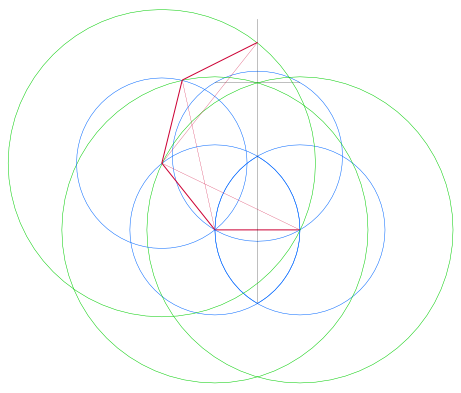
The Heptagon, p2
At nineteen I was naïve enough to take that as a challenge and I set to, armed like the geometricians of ancient Greece, with straight edge, compass and pencil, in an eager attempt to disprove her assertion, using a kind of “reverse engineering” to locate arcs in the hexagon that might match those of the heptagon. After two years I found a way, the first action of the method (neatly) being to bisect one of the sides of a hexagon. As soon as I had discovered this I also realised (while attempting through research to determine that I was not simply reinventing some heptagonal wheel) that throughout history, numerous mystics, kabbalists and obsessives had arrived at flawed solutions to this and other long-term insolubles of mathematics. They are derided as “circle squarers”, from the name of one of the three famous construction problems of classical Greek geometry where it is required that a square be constructed of the same area as a given circle; a problem recognised as eluding all solution, and abandoned by serious mathematicians when, in 1882, the German mathematician Lindemann proved pi to be an irrational number. Even if—miraculously—my construction were exact, I realised that I would, despite my empirical skills in planar geometry, be thrown into the same bag as these perennial new-agers, and the discovery would pass unnoticed. It was Pythagoras who unleashed a flood of occult theories associating geometric forms with what were regarded at the time as universal principles, and I could easily be dismissed as the latest end point of a long meandering line going nowhere.
As symbolism goes, though, the process of creating a heptagon from a hexagon is a beguiling geometric parallel to the philosophical inquiry that runs alongside the geometrical quest. The number six with the hexagon, can represent the world of the inner self, thoughts and feelings enclosed within the generative circle that describes the outermost boundary of the sense of self. The hexagon (as every schoolchild once knew) is easily drawn by dividing the circumference of a circle by its radius—the same compass setting used to draw the circle in the first place. By the very nature of its formation the resulting figure remains contained within the circle, like unexpressed emotions bound by the circle described by the limits of the inner self. Only with our bodies can we truly reach out to others…